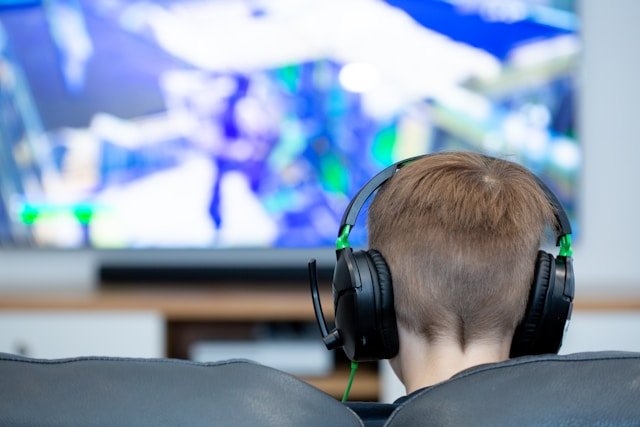Living with hearing loss can be challenging, but modern technology has made it easier to manage. Connecting your hearing aids to your phone, laptop or TV can enhance your listening experience, but it can also be confusing for those who are not tech-savvy. This article will guide you through the process of connecting your hearing aids to your devices.
Understanding the Different Types of Hearing Aids
Before we dive into the connection process, it is essential to understand the different types of hearing aids available. Hearing aids are small electronic devices that amplify sounds to help people with hearing loss hear better. There are several types of hearing aids available, each with its own unique features and benefits.
Behind-the-Ear (BTE) Hearing Aids
BTE hearing aids have a curved casing that rests behind the ear. They are one of the most common types of hearing aids and are suitable for individuals with different types of hearing losses. BTE hearing aids can be customised with different add-ons, such as directional microphones, telecoils, and wireless connectivity. They are easy to handle and maintain and are suitable for people of all ages.
BTE hearing aids come in different sizes, from mini BTEs that are nearly invisible to power BTEs that can provide amplification for severe hearing loss. They are also available in different colours to match your skin tone or hair colour.
In-the-Ear (ITE) Hearing Aids
ITE hearing aids are custom-molded to fit your ear canal. They are less noticeable than BTE hearing aids and have easily accessible controls. ITE hearing aids are suitable for people with mild to moderate hearing loss. They are available in different sizes, from full-shell ITEs that fill the entire outer ear to half-shell ITEs that fit in the lower part of the outer ear.
ITE hearing aids can be equipped with features such as directional microphones and telecoils. They are easy to insert and remove and are suitable for people who wear glasses or hats.
Receiver-in-Canal (RIC) Hearing Aids
RIC hearing aids have a small behind-the-ear casing and a receiver placed in the ear canal. They are suitable for mild to severe hearing loss and provide a natural sound experience. RIC hearing aids are comfortable to wear and are available in different colors and styles.
RIC hearing aids have a flexible tube that connects the casing to the receiver, which allows for a more discreet appearance. They are easy to handle and maintain and can be equipped with features such as directional microphones and wireless connectivity.
Completely-in-Canal (CIC) Hearing Aids
CIC hearing aids are custom-molded to fit deep into the ear canal. They are nearly invisible and provide a natural sound experience. CIC hearing aids are suitable for people with mild to moderate hearing loss and are easy to insert and remove.
CIC hearing aids have limited features due to their small size, but they can be equipped with directional microphones and telecoils. They are comfortable to wear and are suitable for people who want a discreet hearing aid.
Overall, choosing the right hearing aid depends on your hearing needs, lifestyle, and budget. It is important to consult with an audiologist to determine which type of hearing aid is best for you.
Preparing Your Devices for Connection
Connecting your hearing aids to your devices can greatly enhance your hearing experience. However, before you start connecting, there are a few things you need to do to ensure a successful connection.
Checking Compatibility
Compatibility is key when it comes to connecting your hearing aids to your devices. It is important to check that both your hearing aids and your devices are compatible with each other. Different hearing aids may have different compatibility requirements, so it is important to check with the manufacturer or look for compatibility information online.
For example, some hearing aids may only be compatible with certain operating systems, such as iOS or Android. Others may require a specific version of Bluetooth to connect to your device. By checking compatibility beforehand, you can avoid any frustration or disappointment when trying to connect your hearing aids.
Updating Software and Firmware
It is important to ensure that your devices' software and firmware are up to date before connecting your hearing aids. New updates often include compatibility updates, which can improve the performance of your hearing aids and ensure a smoother connection.
Updating your software and firmware is usually a simple process. Most devices will prompt you to update automatically, but you can also check for updates manually in your device's settings.
Gathering Necessary Accessories
Depending on your hearing aids and devices, you may need to purchase additional accessories to connect them. For example, you may need a Bluetooth or audio streaming device to connect your hearing aids to your phone or TV.
It is important to check with your hearing aid manufacturer for advice on compatible accessories. They can recommend accessories that are specifically designed to work with your hearing aids, ensuring a seamless connection.
By following these steps, you can ensure a successful connection between your hearing aids and your devices, and enjoy a more enhanced hearing experience.
Connecting Hearing Aids to Your Smartphone
Hearing aids have come a long way in recent years, and many now come equipped with Bluetooth technology that allows you to connect them to your smartphone. This feature can make it easier to adjust settings, stream audio, and take phone calls, among other things. Here's a closer look at how to connect your hearing aids to your smartphone.
Pairing with an iPhone
If you have an iPhone, pairing your hearing aids is a straightforward process. First, make sure your hearing aids are turned on and in pairing mode. Then, go to your iPhone's Settings menu, select General, and then Accessibility. From there, select Hearing Devices and wait for your iPhone to detect your hearing aids. Once the pairing is confirmed, you're good to go!
It's worth noting that some hearing aid models may require additional steps or have different pairing instructions. Be sure to consult your hearing aid's user manual or contact the manufacturer for specific guidance.
Pairing with an Android Device
Pairing your hearing aids with an Android device can differ depending on the model and brand. For most Android devices, go to Settings, then Connected Devices, and select Pair a New Device. Turn on your hearing aids and ensure they are in pairing mode. Your Android device will detect your hearing aids, and you can confirm the pairing.
Again, it's important to note that some hearing aid models may have different pairing instructions, so be sure to consult the user manual or contact the manufacturer for guidance.
Using Hearing Aid Apps for Customisation
The Oticon remote care app allows you to customise the sound and settings of your hearing aids. The app can be downloaded from the app store and paired with your hearing aids using Bluetooth technology.
With the app, you can adjust the volume, bass, treble, and other settings to create a personalised listening experience. The app also offers features like geotagging, which allows you to save specific settings for different locations, and remote control, which lets you adjust your hearing aids from your smartphone.
Overall, the ability to connect your hearing aids to your smartphone can greatly enhance your listening experience and make it easier to manage your hearing aids. If you're not sure how to connect your hearing aids or customise your settings, don't hesitate to reach out to our team for assistance.
Connecting Hearing Aids to Your Laptop or Computer
Using Bluetooth for Connection
Connecting your hearing aids to your laptop or computer via Bluetooth is easy. Turn on your hearing aids and ensure they are in pairing mode. On your device, go to settings, then Bluetooth, and select your hearing aids. Follow any additional prompts, and your hearing aids should be connected.
Utilising Audio Streaming Accessories
You may need to purchase additional audio streaming accessories, such as a streamer or transmitter, to connect your hearing aids to your laptop or computer. These accessories transmit the audio directly to your hearing aids, providing a clearer sound experience.
Adjusting Audio Settings for Optimal Listening
You can adjust the audio settings on your laptop or computer to improve your listening experience. Adjust the volume, balance, and equalizer settings to your liking.
Conclusion
Connecting your hearing aids to your phone, laptop or TV can dramatically improve your listening experience. With the right preparation, accessories, and knowledge, you can enjoy crystal-clear sound and enhanced listening experiences. If you have any difficulties with connecting your hearing aids, contact our customer service team for support.
Book a free hearing test






